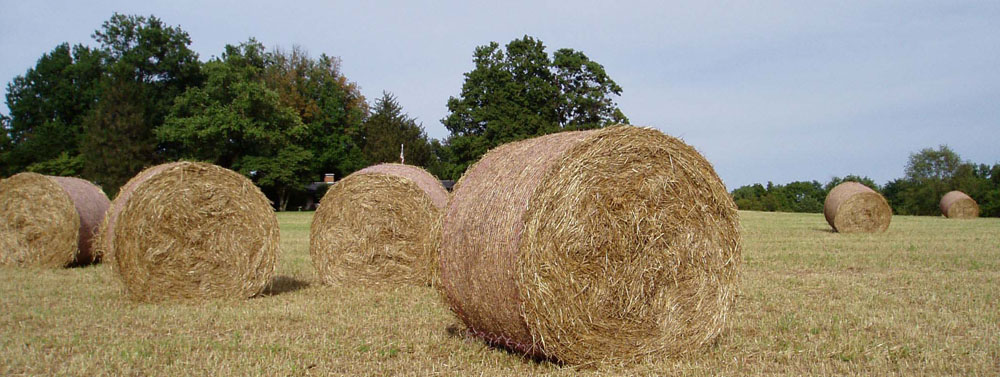St. Louis is a Hub of US Farm Production – St. Louis Agribusiness Club
In September, the St. Louis Agribusiness Club released their 2025 Economic Study of the agribusiness economic impact on the St. Louis region. For those of us in this region, it is validation of the passion we have for working in the agribusiness industry in this area. It is a similar story for any major statistical area in the upper Midwest.
The report found that in 2024, the St. Louis Metropolitan Statistical Area (MSA) has a local agribusiness gross domestic product (GDP) of $25.7 billion dollars and a total job contribution of 176,088 job direct and indirect jobs. In the St. Louis MSA, those values represent 10.8 percent of the total GDP and 9.3 percent of the total jobs. Agribusiness is important in the St. Louis area.
This chart from the economic study release presentation focuses on the narrow subcategory of farms and production. Of the 1.9 million farms in the US, within 500 miles of St. Louis are half the farms (48 percent). This is just over 900,000 farms. This 500-mile radius is a BIG area. From Canada on the north, to the Gulf on the south. From Virginia on the east to Kansas on the west. It is the heart of the Mississippi River watershed. And for the most part, it is rainfed agriculture. There is significant irrigated agriculture in the Mississippi delta (floodplain), but the water table in this area is refreshed continuously with rainfall.
In this 500-mile radius of St. Louis – 785,398 square miles of total land – are:
- 48% of U.S. Farms
- 46% of U.S. Agricultural Production
- 49% of U.S. Poultry Sales
- 72% of U.S. Hog Inventories
- 78% of U.S. Corn Production
- 81% of U.S. Soybean Production
So, most of the corn, soybean, and hog production happens in this large region. These are the lower-valued commodities. While fruit, vegetable, and dairy farms, tend to have a higher value as they flow more directly into food markets. On a total land area basis it is 22.2 percent of the US total land area according to the 2022 Census of Agriculture.
One way to put it into context is to compare this area to the size of various states.
- The total land area is equivalent to the total land area of five times the size of California.
- The 500-mile radius area is 3 times the size of Texas.
- The three quarters of a million square miles in the 500-mile radius of St. Louis is equivalent in size to 11 states of Missouri, or 14 states of Illinois.
- The state of Delaware, nestled in the highly populated east coast, but still with 42 percent of land in farms, will fit into the 500-mile radius 400 times.
It is a lot of land, but an important reminder that in the US the state boundaries are not equivalent. This is important when evaluating farmland within an area as well as the number of farms within an area. Farms vary in size and are not the same acres-per-farm size within states.
Within the St. Louis MSA, agribusiness generates 10 percent of the GDP and jobs. This includes just over 10,000 farms. 10,584 farms is only about 1 percent of the 900,000 farms in the 500-mile radius. About 60 percent of those farms are in the seven Illinois counties and 40 percent are in the six Missouri counties and the city of St. Louis. It takes a special kind of farmer to compete with the pressures of urban expansion. The trade-offs are that there are some benefits to being closer to value-adding markets and consumers.
So what is the 300-mile radius circle that is superimposed on the economic study chart? That is the operational space of Biomass Rules. From Chicago to Kansas City to Indiana. It also goes all the way south to Memphis. Nearly 5 hours out of St. Louis in every direction. This is also the zone used by Greenville University to evaluate the establishment of their BS in Agribusiness. This has worked well for the last 10 years. This smaller area is very similar to the larger 500-mile radius, but the total area is only about one third the size (36 percent).
It is good news to be part of the St. Louis agribusiness economic engine. The St. Louis Agribusiness Club provides a lens through which the positive energy of business expansion is focused.



Comments
St. Louis is a Hub of US Farm Production – St. Louis Agribusiness Club — No Comments
HTML tags allowed in your comment: <a href="" title=""> <abbr title=""> <acronym title=""> <b> <blockquote cite=""> <cite> <code> <del datetime=""> <em> <i> <q cite=""> <s> <strike> <strong>